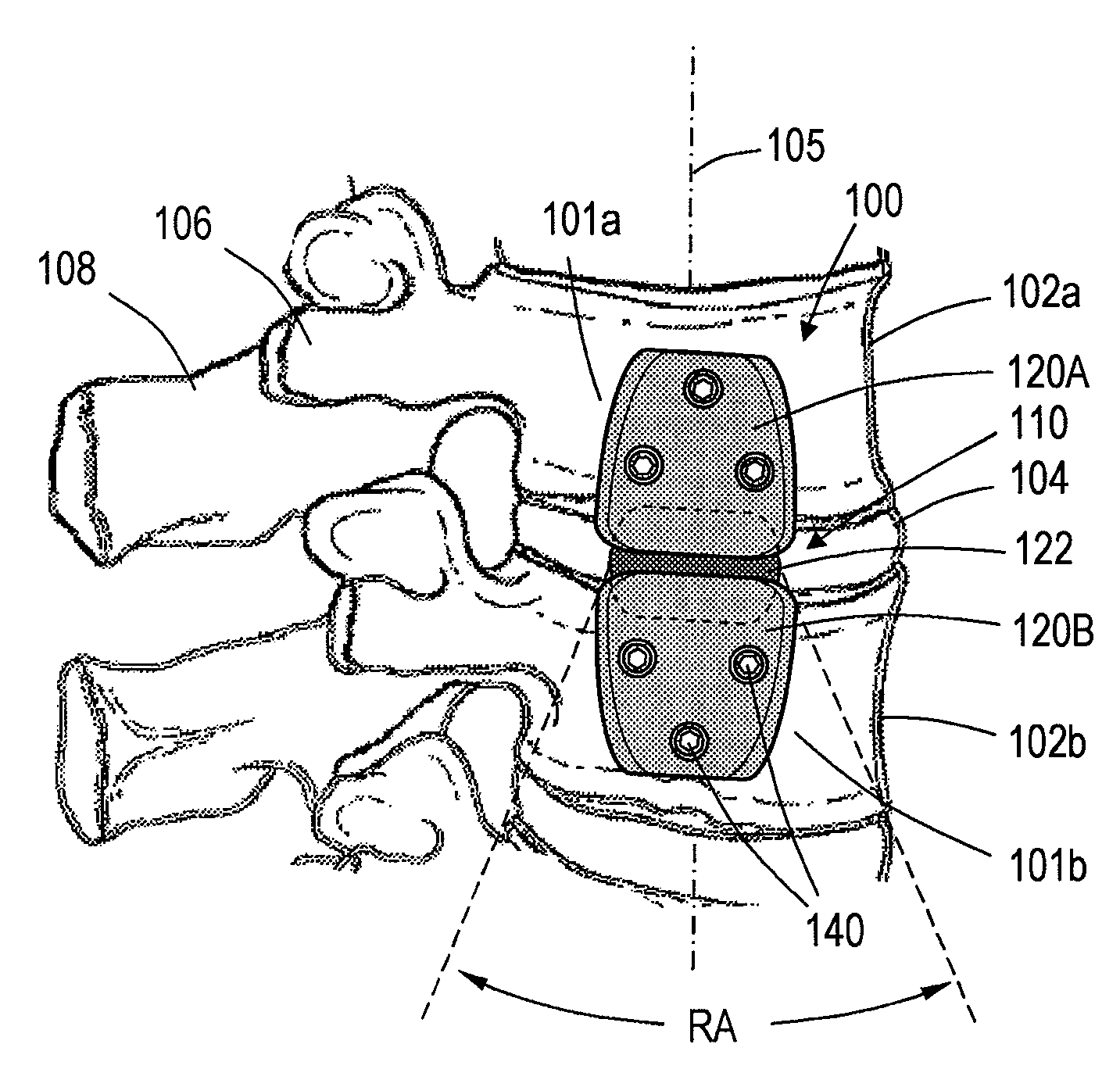Spine treatment devices and methods
a technology for spine disorders and devices, applied in the field of spine implants, can solve the problems of high surgical risk, uncertain outcome and efficacy of spine implants, and high risk of fusion procedures, so as to reduce nerve compression, increase intervertebral spacing, and increase the volume of spinal canals
- Summary
- Abstract
- Description
- Claims
- Application Information
AI Technical Summary
Benefits of technology
Problems solved by technology
Method used
Image
Examples
Embodiment Construction
[0028]FIGS. 1-3 show a spine segment and one embodiment of a spine implant system, the implant system having an implant body or assembly 100 extending between outward or lateral surfaces 101a and 101b of first and second vertebra 102a and 102b. It can be seen that the intermediate portion 110 of the implant body 100 spans disc 104, with the implant body generally extending in a superior-inferior direction in alignment with axis 105 of the spine segment. The implant body 100 can extend between lateral or outward surfaces of the anterior vertebra, as opposed to the pedicles 106 or spinous processes 108. In a preferred embodiment the first and second vertebrae 102a and 102b can be lumbar or thoracic vertebrae. In another embodiment the first and second vertebra 102a and 102b can be cervical vertebrae.
[0029]Still referring to FIGS. 1 and 2, each implant body 100 can have a first (e.g., superior) body portion 120A and a second (e.g., inferior) body portion 120B. In some embodiments, as i...
PUM
 Login to View More
Login to View More Abstract
Description
Claims
Application Information
 Login to View More
Login to View More - R&D
- Intellectual Property
- Life Sciences
- Materials
- Tech Scout
- Unparalleled Data Quality
- Higher Quality Content
- 60% Fewer Hallucinations
Browse by: Latest US Patents, China's latest patents, Technical Efficacy Thesaurus, Application Domain, Technology Topic, Popular Technical Reports.
© 2025 PatSnap. All rights reserved.Legal|Privacy policy|Modern Slavery Act Transparency Statement|Sitemap|About US| Contact US: help@patsnap.com



